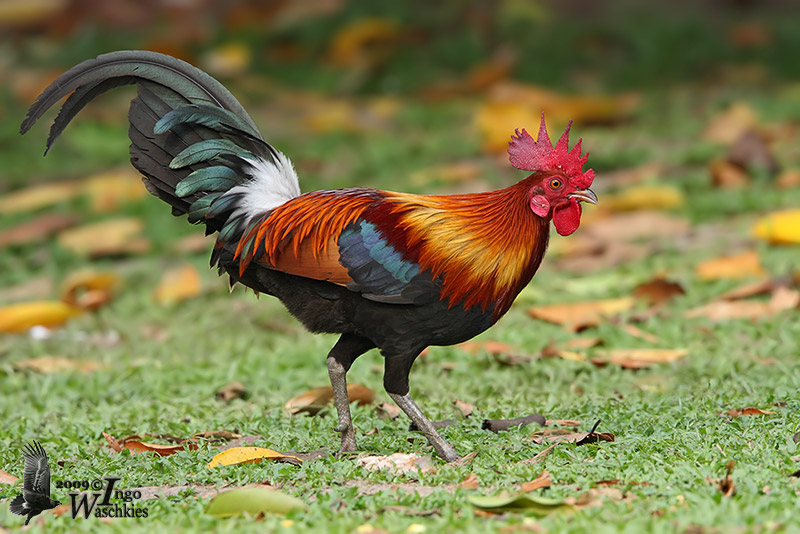
Gallus gallus
SUBFAMILY
Phasianinae (Tribe Phasianini)
TAXONOMY
Phasianus gallus Linnaeus, 1758, Poulo Condor, Vietnam. Five
subspecies.
OTHER COMMON NAMES
English: Wild junglefowl; French: Coq bankiva; German:
Bankivahuhn; Spanish: Gallo Bankiva.
PHYSICAL CHARACTERISTICS
Male 25–30 in (65–78 cm), female 16–18 in (42–46 cm); male
1.5–3.2 lb (0.7–1.5 kg); female 1.1–2.3 lb (0.5–1.1 kg).
DISTRIBUTION
Northern India, Nepal, and Bangladesh, southern Yunnan to
Hainan Island, Southeast Asian peninsula, and Sumatra, Java,
and Bali.
HABITAT
Woodland edge and secondary scrub in tropical and sub-tropical
areas from sea level to 6,560 ft (2,000 m).
BEHAVIOR
Often seen in groups consisting of one male, several females,
and offspring; roosts socially in trees or bushes.
FEEDING ECOLOGY AND DIET
Seeds, including rice, and invertebrates, including eggs.
REPRODUCTIVE BIOLOGY
Polygamous. Breeds almost year round in India and Malaysia;
nests typically under bushes or in bamboo; clutch size five to
six; incubation 18–21 days; chicks can fly at seven days.
CONSERVATION STATUS
Widespread and locally common.
SIGNIFICANCE TO HUMANS
The supposed progenitor of all domestic fowl, and therefore
arguably the most important bird species of all to humans.
Other popular Animals
Photo Gallery of - Red junglefowl
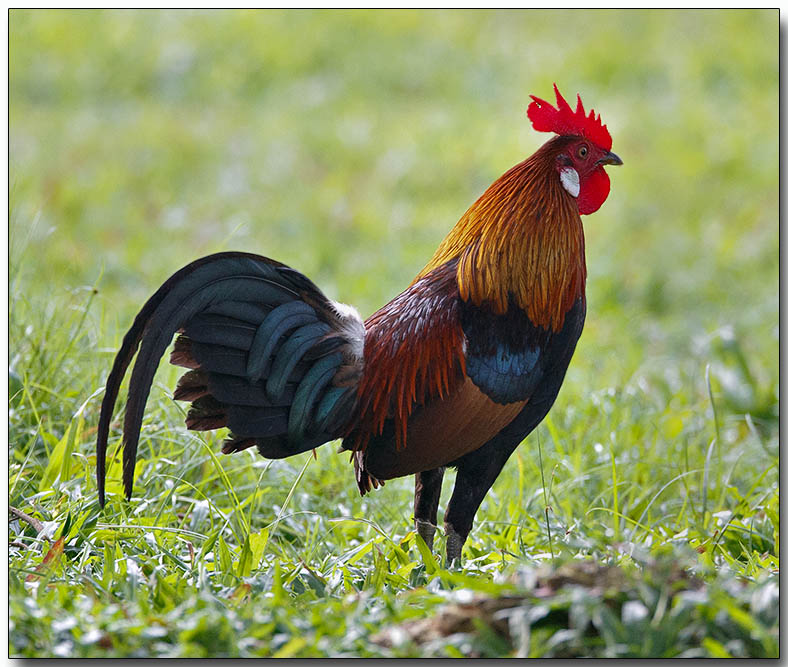
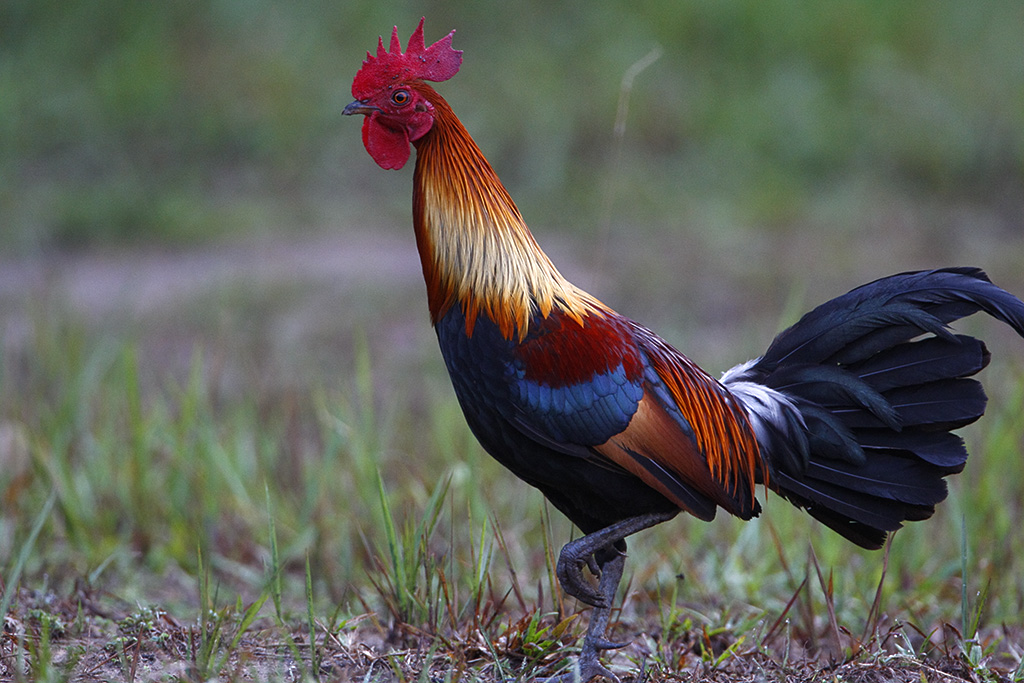
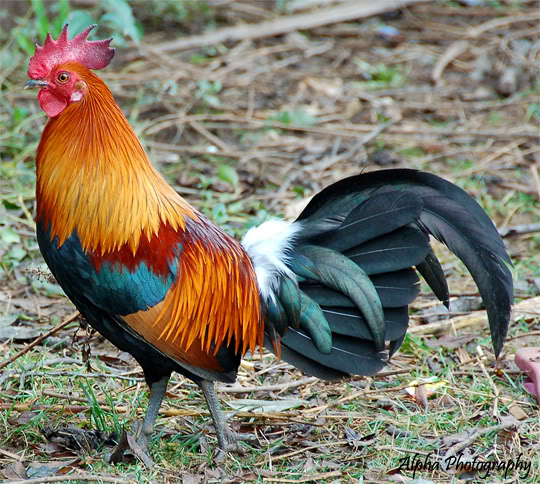
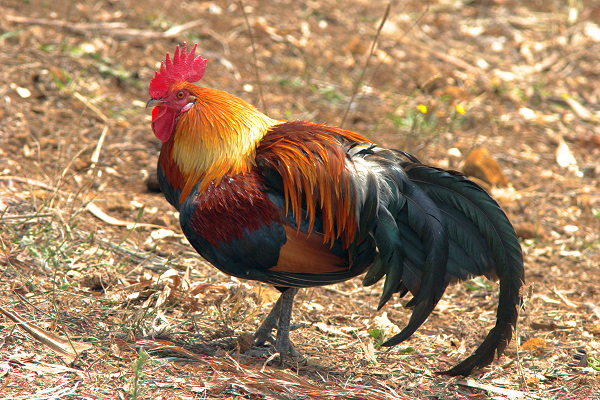
 Animalia Life
Animalia Life